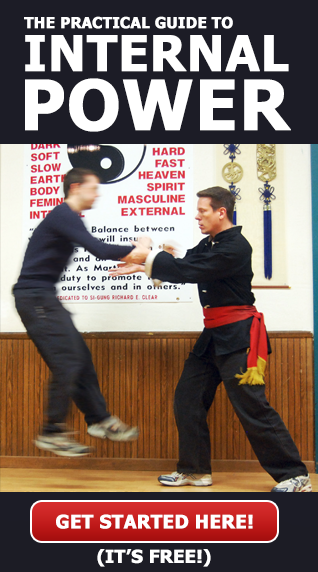The 13 Kinetic Postures of Tai Chi are the same 13 Tai Chi energies that I wrote about in the previous post on the 13 postures of Tai Chi. As I wrote in that post on the 13 postures the main thing to understand about the 13 Kinetic Postures of Tai Chi, as they are referred to, is that they are really not so much physical postures as they are specific applications and expressions of movement and energy.
Kinetic refers to movement and that movement is the basis for the energy of the 13 Kinetic Postures of Tai Chi. The biggest thing to realize is that by energy I do not mean mumbo-jumbo but instead am referring to energetic expression in the same way that any physical effort is an expression of physical energy.
Proper alignment and inner body connection including ground path are important contributing factors to the energetic expression as well. I will be writing some posts on specific Tai Chi energies to help explain some of these aspects of the art in more detail.
Anyway, for the rest of this post I will try to elaborate on the energetic action of the 13 Kinetic Postures of Tai Chi.
The 13 Kinetic Postures Energies
I will be writing separate posts about most of these to really get into detail on what they are about.
The 8 Energies
1. Peng – Ward Off
I will be writing an in depth post about this one as it is very involved. Until then one basic way to think about peng is to put a large shield between you and an oncoming object and your body structure is braced behind the shield to deflect the oncoming object thereby warding it off.
2. Lu – Roll Back
Turning in any direction to help cause an incoming force to deflect off to the side or over or around you.
3. Ji – Press
Squeezing into or pressing into an object and causing as much of your alignment body force as possible to be concentrated into a small area. Often Ji involves expressing two directions of force together into one point forcing the recipient to be moved away by the squeezing out action.
4. An – Push
Gather and receive power then express power out usually in a direction that is under then up to lift and push through.
5. Tsai – Pluck
Think about plucking / picking fruit off of a tree with your fingers. In this case the action is against some body part of the other person’s such as their fingers or their elbow. The action is designed to suddenly pull the opponent out of alignment and position.
6. Lieh – Split
Think of pulling with one arm and pushing with the other as in an arm break / manipulation.
7. Zhou – Elbow
In this case the elbow with full body weight behind it.
8. Kao – Shoulder
In this case the shoulder with full body weight behind it.
Back
The back can also be used although it does not have its own separate designation in the 13. Usually the shoulder is used first and then if the shoulder is circumvented then the back can be turned into play.
The 5 Steps
1. Advancing Forward Steps
The expression of momentum added to the action.
2. Retreating Backwards Steps
Causing a vacuum for the opponent to overextend and fall into. The idea of leading the opponent into defeat.
3. Stepping to the Left
4. Stepping to the Right
The idea of avoiding and dissipating incoming force while gaining positional advantage.
5. Zhong Ding – Central Equilibrium
The vertical axis that everything else rotates around and up and down connection. This one deserves its own post and it is covered somewhat extensively in the first Clear Intermediate Tai Chi video.

The kinetic postures were shown to me, but never explained in detail. I have known about these 8 energies for a long time, along with small examples of how they worked, yet no one would share the extensive information you are willing to divulge.
As for the footwork you are also sharing more information than I have ever been able to obtain from any teacher other than step forward diagonally front foot pointing straight ahead, rear foot pointed at 45 degrees. Both heels should have a diagonal line between them. Stepping backwards, or as Yang Zhengduo sez, “Retreating with honor,” Rear foot steps back at 45 degs, front foot pointing straight ahead, heels should be aligned like you are walking a tight rope. Waist turning to deflect energy.
Looking forward to more information, thanks.
Best Wishes,
Dan